The term “cardboard box” is often misused when referring to corrugated boxes. Corrugated fiberboard cartons are the correct technical term. Cardboard boxes are actually particleboard boxes and are mostly used for lightweight products like cereal or board games. Corrugated fiberboard boxes are widely used in retail packaging, shipping cartons, product displays, and many other applications that require a lightweight, yet strong material.

1. Corrugated composition
Corrugated fiberboard consists of an inner liner and thick paper medium. A backing plate is a flat outer surface attached to the medium. The media is corrugated, fluted paper between liners. Both papers are made from a special thick paper called cardboard. The strength of the board depends on the different liner and medium combinations.
- (A) Single-sided: A corrugated medium is glued to a flat backing; the flute is exposed.
- (B) Single wall: The corrugated medium is glued between two liner sheets. Also known as two-faced people.
- (C) Double-layer wallboard: three-layer lining board, with a two-layer lining board in the middle.
- (D) Three-layer wall: Four layers of inner lining with three layers of interlayer in between.

2. Flute
Corrugated cardboard can be made with several different channel profiles. In general, larger geometries provide greater vertical compressive strength and cushioning. Smaller channel profiles provide enhanced structural and graphic functionality for retail packaging.
The five most common flute profiles are:
- Type A flutes: about 33 flutes per foot. Original corrugated groove design.
- B-Slots: About 47 slots per foot, 1/8″ thick; usually canned.
- C-Slots: About 39 slots per foot, 5/32″ thick; typically used for shipping cartons.
- E-groove: about 90 grooves per foot, 1/16″ thick.
- F-Slots: About 125 slots per foot, 1/32″ thick; for small retail packages.
Different groove types can be combined on a combination board. For example, a three-wall board may contain one layer of a-slot dielectric and two layers of c-slot dielectric. The profile of the mixing tank allows the designer to adjust the Compressive strength, cushioning strength, and overall thickness of composite panels.

3. How to measure a box
Dimensions should always be expressed in the order of length, width, and depth (exceptions include book folds, bins, and dividers, which are in the order of width, length, and depth).
Boxes are always measured along their opening, with the length being the longest dimension and the width being the shortest. Depth is the distance between the opening and the opposite pot
Boxes are generally measured from the inside, and dimensions refer to the opening of an assembled box. Internal dimensions are used for measurement as the thickness of the corrugated board may vary. Boxes made with Type B flutes have different external dimensions than boxes made with Type E flutes. When measuring the interior of a ready-made box, be sure to measure from the center of the fraction (the squashed polyline).
External dimensions may be required to communicate shipping and pallet configuration purposes. When listing outside dimensions, always include “outside diameter” in the dimension (eg, 10″x22″x12″ OD).
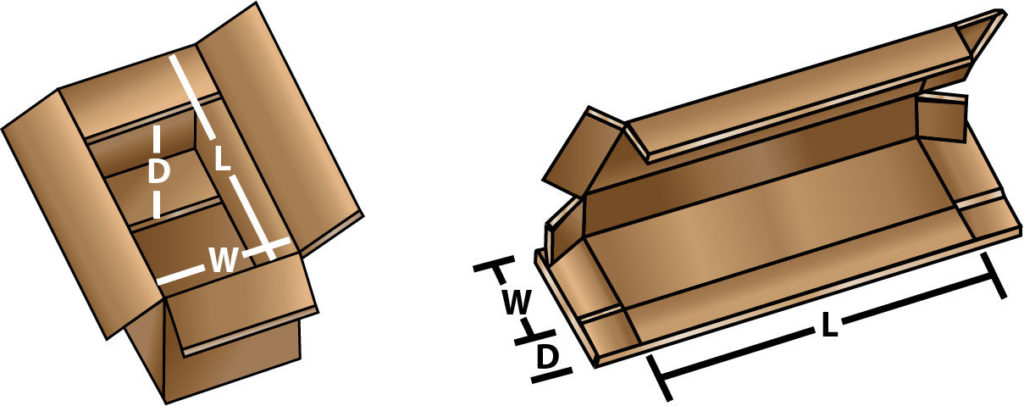
4. Box style definitions and abbreviations
Most box styles can be grouped into the following categories: Slotted Boxes, Telescope Boxes, Folders, Rigid (or Bliss) Boxes, Free-standing Boxes, and Indoor Forms. In addition, corrugated boxes can also be custom designed according to the specific needs of customers.
1) slotted box
These boxes are usually made from a piece of corrugated fiberboard. The blank is scored and grooved to allow folding. The box is the plane for transportation and storage, and is assembled according to the needs of the user. Some of the most common types include:
Regular Slotted Container (RSC) – All flaps are the same length, the two outer flaps are half the width of the container so that they meet in the center of the box when folded. The most common box style is RSC.

Half Slotted Container (HSC) – Same as Regular Slotted Container (RSC) but without a set of flaps.

Overlapping Slotted Containers (OSC) – All flaps are the same length; outer flaps overlap by an inch or more. Boxes are usually closed with staples across the overlapping area. This style of case is used when the case is much longer than it is wide, resulting in a long gap between the internal flaps. The seal overlap helps keep the outer flaps from separating.

Fully Overlapping Slotted Containers (FOL) – All flaps have the same length (width of the box). When closed, the outer flaps fully overlap within an inch. This style is particularly resistant to rough handling and provides additional product cushioning and stacking strength.

Central Special Slotted Container (CSSC) – Inner and outer flaps cut to different lengths. The two sets of pleated leaves meet in the center of the box. This style is particularly strong because the top and bottom are twice the thickness of corrugated cardboard. Inner flaps, with no gaps, provide a level base for the product.

Center Special Fully Overlap Slotted Container (SFF) – Inner and outer flaps cut to different lengths. When closed, the inner flaps meet in the center of the box and the outer flaps overlap completely. With three full layers of composite boards throughout the top and bottom, this style provides extra cushioning and stacking strength.

2) Telescope box
These boxes usually consist of top and bottom parts that fit into each other. “Telescopic” generally describes a box whose lid extends at least two-thirds of the depth of the bottom, while a box with a lid means that the lid extends less than two-thirds of the depth of the bottom. Common types include:
Full Telescope Design Style Container (FTD) and Covered Design Style Container (DSC) – Two-piece boxes made from two scored and slotted blanks (trays).

Full Telescopic Half-Slotted Container (FTHS) – Two-piece body made from two half-slotted containers.

3) Rigid Box
The rigid box consists of two identical end panels and the main body, folded to form two side panels, a complete bottom, and a top. Flaps are used to form joints. Once the connection is sealed, the box is considered rigid.
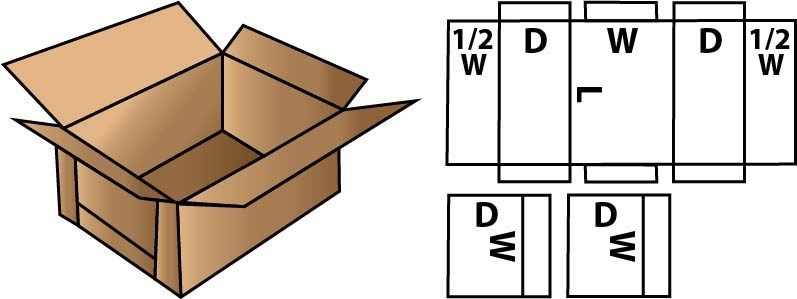
4) Self-Erecting Boxes
Self-Erecting Boxes typically feature a regular slotted container or telescopic top.
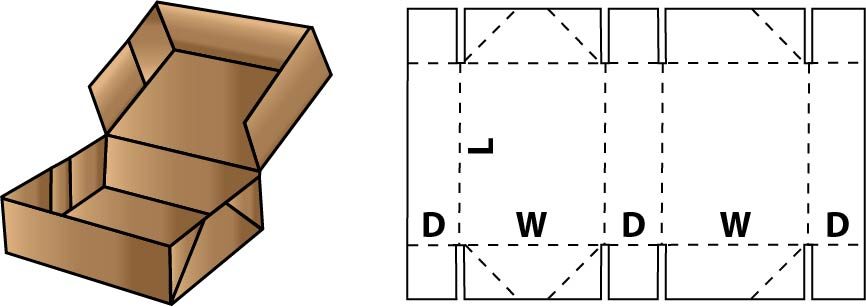
5) Folder
They consist of one or more composite boards with the underside intact and scored and folded around the product. Popular styles include:
One Piece Folded Panel (OPF) – A panel is cut to form a flat bottom with pleats forming the edges and ends, and an extension of the edge pleats forming the top.
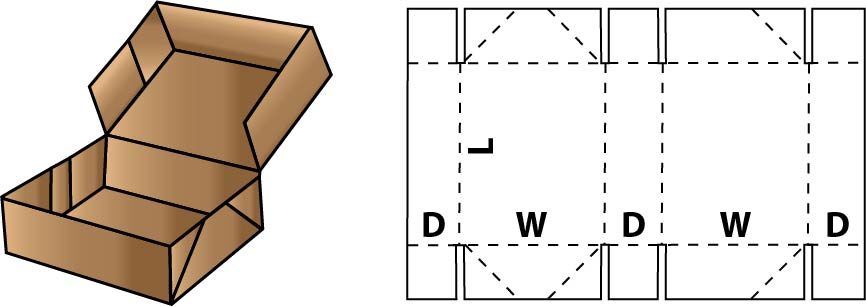
Five-Panel Folder (FPF) – A single cut and scored piece feature a fifth panel that acts as a closing flap, completely covering the side panels.
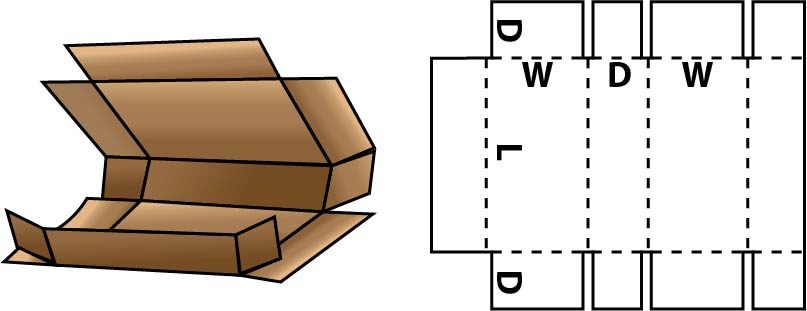
The tray is formed from a single composite board, with a complete bottom and end panels of several layers of corrugated design. They are often used as parts for inner containers, delicate products, or mail pieces.

6) Nterior form
These include a wide variety of constructions, dividers, partitions, and other interior packages. They can be used to separate or cushion products, strengthen boxes or fill voids. They may be simple rectangular, scored, slotted, or die-cut shapes. Common formats include:
Pads are the common shape of corrugated or solid fiberboard used to fill spaces or separate layers or parts of a product.
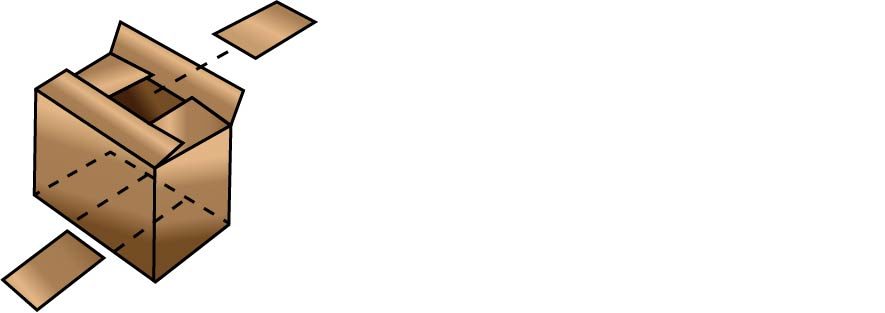
The tube is a scored rectangle that is folded to form a faceted structure.

Dividers provide separate cells for each item in the box. It is mainly used to package glassware and other fragile items.

The inner package is scored and/or folded fiberboard for cushioning, suspension and separation, as well as filling voids.

Inner packaging forms are typically die-cut fiberboard pieces designed for placement and walls that support the product away from the box for added protection.

5. Corrugated box certificate
The box manufacturer’s certificate (BMC) is placed on the outside of the bottom flap. This symbol identifies the manufacturer and serves as a sign of compliance with the specifics described. The stamp identifies the material and certifies the results of the Mullen burst test or edge crush test.
The Mullen burst test measures a box’s ability to withstand external or internal forces and hold its contents during handling. The test proves that the box can withstand the specified pressure (lbs). Per square. ), as indicated by the Mullen tester.
The edge crush test measures the amount of force (lbs. per in.) that would cause the compressive failure of the corrugated board across the edge of the specimen. The result is the main factor in determining the compressive strength of a complete box.
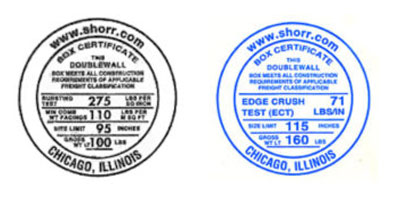
6. Fiberboard Performance Standards
Here are some common fiberboard performance standards:
1) SINGLE WALL
| Max Wt. Box/Contents (lbs.) |
Min. Burst Test (lbs. per sq. in) |
Min. Edge Crush Test (lbs. per in. width) |
| 20 | 125 | 23 |
| 35 | 150 | 26 |
| 65 | 175 | 29 |
| 80 | 200 | 32 |
| 90 | 250 | 40 |
| 95 | 275 | 44 |
| 120 | 350 | 55 |
2) DOUBLE WALL
| Max Wt. Box/Contents (lbs.) |
Min. Burst Test (lbs. per sq. in) |
Min. Edge Crush Test (lbs. per in. width) |
| 80 | 200 | 42 |
| 100 | 275 | 48 |
| 120 | 350 | 51 |
| 140 | 400 | 61 |
| 160 | 500 | 71 |
| 180 | 600 | 82 |
3) TRIPLE WALL (minimum puncture test, oz. per in. of tear)
| Max Wt. Box/Contents (lbs.) |
Min. Burst Test (lbs. per sq. in) |
Min. Edge Crush Test (lbs. per in. width) |
| 240 | 700 | 67 |
| 260 | 900 | 80 |
| 280 | 1100 | 90 |
| 300 | 1300 | 112 |
7. Glossary of terms
Adhesive: Substance used to bond multiple layers of solid fiberboard together, to hold backing sheets to the tops of grooves in corrugated media, or to hold overlapping pleats together to form a joint or close a box.
Package: A unit of shaped material wrapped in fiberboard or other material and bound with tape, rope, or wire.
Basis Weight: An attribute of the board, but its value can be determined from the combined corrugated board. When determining the basis weight of a composite panel, the pull-in coefficient of the corrugated medium (which varies with slot size) and the weight of the adhesive must be considered.
Bending: The ability of cardboard or composite board to be folded along a score line without rupturing the surface fibers to the point of severely weakening the structure.
Blank or Carton Blank: A corrugated cardboard that has been cut, scored, and grooved but not yet glued together.
Carton Manufacturing Plant: A facility that has the equipment to score, slot, print, and join corrugated or solid fiberboard boards into cartons and uses the equipment to regularly produce commercial quantities of fiberboard cartons.
Box Manufacturer Certificate (BMC): A statement printed on a corrugated box lid with a circular or rectangular pattern that certifies that the box complies with all applicable standards and identifies its manufacturer. It is also sometimes called a grade stamp or a certificate stamp.
Box Style: A unique configuration of the box design, regardless of size. A name or number identifies a commonly used style.
Carton: Cardboard used in the manufacture of folding cartons and fixed (rigid) cartons.
Stacking: Layers of corrugated cardboard are glued together to form a liner of desired thickness, usually for inner packaging.
Bulk Cargo: Unpackaged cargo in a container. Also, large boxes (eg, “bulk boxes”) are used to hold large quantities of products.
Bundle: A shipping unit of two or more items or boxes wrapped or secured together in a suitable manner.
Caliper: Usually expressed in thousandths of an inch (mil), sometimes called a “point”. Caliper measurements are also used as an indirect measure of build quality.
Cardboard: A thin, stiff cardboard used to make playing cards, signs, etc. The terms carton (folding carton) and carton (corrugated box) are often misused.
Carton: A collapsible box made from a carton for consumer quantities of products. Cardboard boxes are not considered shipping containers.
Cartons: Corrugated or solid fiberboard cartons are used in the packaging industry.
Particleboard: Cardboard is usually made from recycled paper. Uses include liner writing paper, dividers in boxes, and intermediate layers of solid fiberboard.
Composite Board: A composite board assembled from several components, such as corrugated or solid fiberboard.
Compressive strength: The ability of corrugated boxes to withstand uniform external forces. The top-to-bottom compressive strength is related to the loads that the container may encounter when stacked. End-to-end or end-to-end compression may also be useful for specific applications.
Cardboard: Cardboard components (liners, corrugated materials, and particleboards) used in the manufacture of corrugated and solid fiberboards. The raw materials used to make paperboard can be virgin cellulosic fibers, recycled fibers, or a combination of the two.
Corrugated board (corrugated fiberboard): A structure formed by bonding one or more fluted corrugated media to one or more flat surfaces of a liner. There are four common types:
- Single Sided: Glue a fluted corrugated media to one flat surface of the liner.
- Single Wall: Two flat surfaces of the liner, one glued to each side of the corrugated medium. Also known as two-faced people.
- Double Wall: The three planes of the inner liner are glued to the two sides of the two corrugated media respectively.
- Three-layer wall: The four planes of the inner liner are glued to each side of the three kinds of corrugated media.
Corrugator: Roll two or more continuous sheets of cardboard from a roll of cardboard, press the grooves into a corrugated medium, apply adhesive to the tips of the grooves, and glue the inner liner together to form the corrugation Cardboard machine. Continuous boards can be cut to the desired width, cut to the desired length, and scored in one direction.
Design Style: A style of fiberboard tray or cap with flaps that are scored, folded, and fastened to the flange sidewall to create depth, as opposed to a slotted style that has a set of primary and secondary closure flaps.
Die cutting: The act of using a die to cut a raw material (such as a composite board) into the desired shape (such as a box blank).
Dimensions: Three dimensions of a box: length, width, and depth. Internal dimensions are used to ensure a proper fit around the product. External dimensions for carrier classification and hood determination
Medium: The cardboard used to make the corrugated cardboard slot layer.
Mullen (or Burst) Test: The Mullen test is the standard industry measurement of the burst strength of the corrugated boards.
Overlap: A design feature in which the top and/or bottom flaps of the box do not overlap, but instead overlap each other. From flap edge to flap edge, the overlap is measured.
Liner: A corrugated or solid fiberboard, or sheet of other approved material, used for extra protection or to separate multi-layered items in shipping packaging.
Palletizing: The securing and loading of containers on pallets for shipment as a single unit, usually for mechanical equipment handling.
Panel: The “face” or “edge” of the box.
Paperboard: One of the two main categories of products in the paper industry. Includes a broad assortment of materials made from cellulose fibers onboard machines, primarily wood pulp and recycled paper stocks. The main types are cardboard and cartons. (Another major product category for the paper industry is paper, which includes printing and writing paper, packaging, newsprint, and tissue.)
Partition Board: A group of corrugated, strong fiberboard or particleboard sheets that, when assembled into units, are interlocked for shipping items.
A number of layers: Any of several layers of liner or solid fiberboard.
Dot: A term used to describe the thickness or caliper of cardboard, a point equals one-thousandth of an inch.
Puncture resistance: The puncture resistance of the composite board refers to the ability of the finished container to withstand the pressure of internal and external points, as well as the ability to protect the product during rough handling. This method is used on heavier double and triple walls as an alternative to blasting.
Regular Slotted Container (RSC): A box style made from a sheet of corrugated cardboard. Sheets are scored and slotted to allow for folding. The top and bottom of the box are formed by flaps extending from the side and end panels. The two outer flaps are half the width of the container to meet in the center of the box when folded. The groove direction can be perpendicular to the length of the lamella (usually for top-opening RSCs) or parallel to the length of the lamella (usually for end-opening RSCs).
Scoring: Imprints or creases in corrugated or solid fiberboard for orientation and ease of folding.
Scored and Slotted Board: A corrugated fiberboard with one or more scores, grooves, or slits. Can be further defined as a blank box, box piece, tray or package, partition piece, or inner package.
Seam: A connection formed by any free edge of a container lid or panel that joins or leans against another part of the container, which may be secured with tape, stitching, or adhesive during the closure of the container.
Set Box: A box that has been squared, with a set of end flap seals, ready to contain the product. Cargo: Items packaged for shipment in a fully assembled or erected form
Sheet: A rectangular composite board, untrimmed or trimmed, sometimes scored in corrugated cardboard. The other is a rectangle made of cardboard, paper, or any constituent layer of paper as it is unwound from a roll.
Slit: A cut in the fiberboard that does not remove material.
Cut Scratches: Use a shallow knife in the blanks of the box to fold the edges and sides of the box into a shipping box.
Carrier Board: A flat sheet of material used as a basis for assembling, storing and transporting goods and materials.
Slit: A wide slit, or pair of closely spaced parallel slits, consisting of cuts in narrow strips of material in a fiberboard, usually to create a hem so that when folded it does not bulge due to the thickness of the material. A common width is 1/4 inch. (6 mm) and 3/8 in. (9mm).
Stacking Strength: The maximum compressive load a container can withstand without damage for a given length of time under given environmental/distribution conditions.
Tensile Strength: Refers to the resistance of the paperboard to breaking when it is pulled into or through equipment during converting and printing.
Tube: A sheet composed of wooden boards, scored and folded into a faceted shape with open ends. It may be an element of a box style or a unit of internal packaging that provides protection and compressive strength.
Unit: A large collection of bundled or unbundled boxes, bundled or stretched into a ball, for shipping.
Single Piece Loading: Loading of several items or containers bundled together with tension tape, plastic shrink film, or stretch film.
Web: A continuous piece of cardboard or paper.
Box: A scored and slotted corrugated fiberboard that folds the contents into a box. Users make flaps and seam closures at the same time.

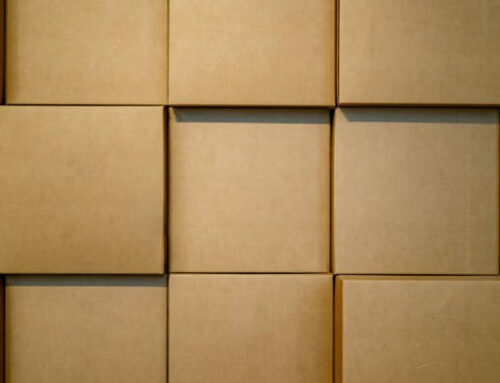
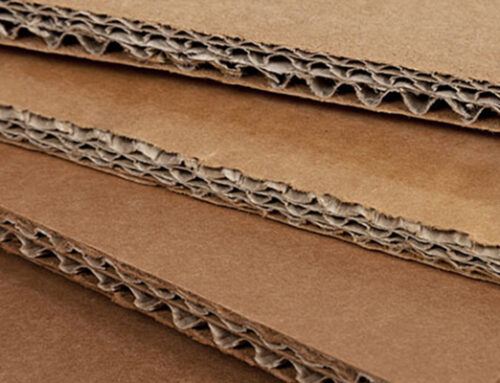
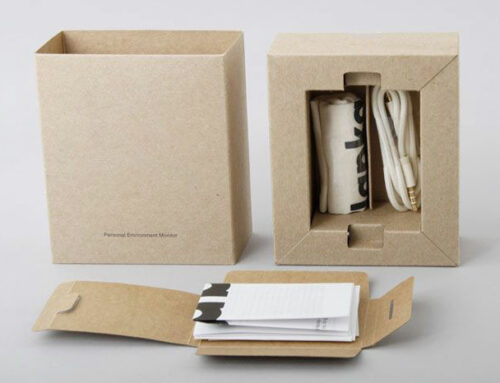
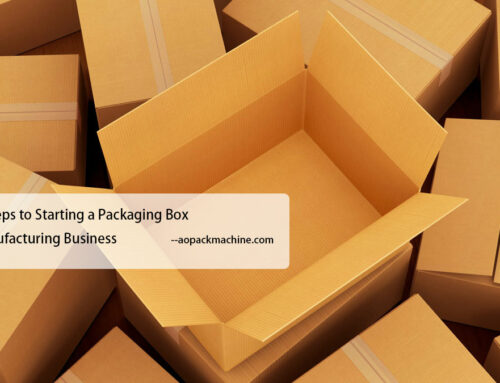
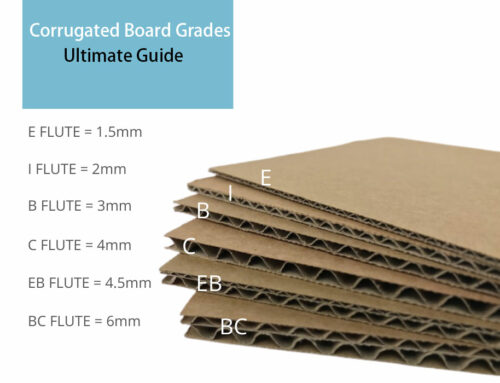
Leave A Comment